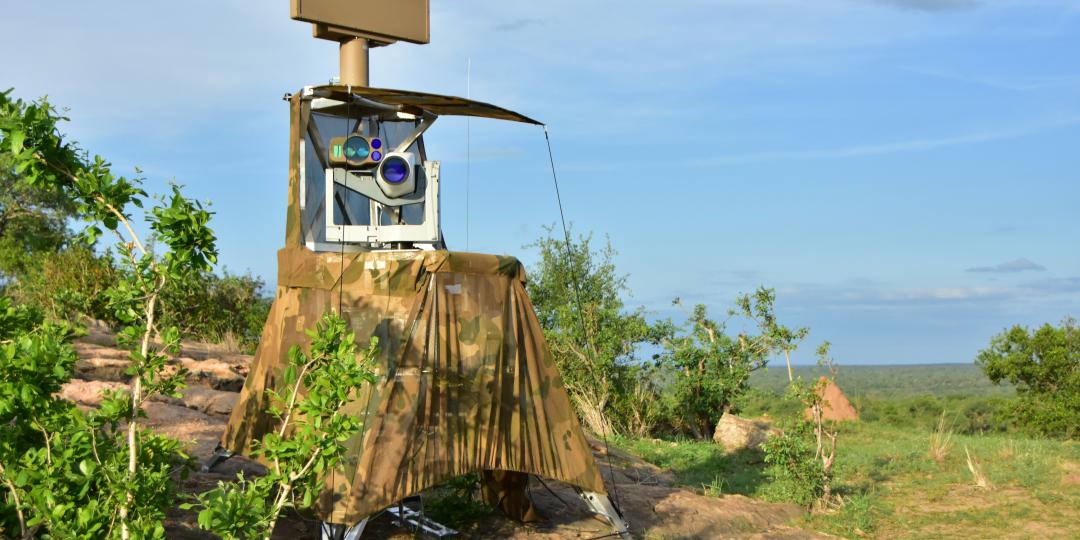The Meerkat Wide Area Surveillance System (WASS) is being successfully utilised to detect and classify people and animals over a wide area, and has had well documented successes in curbing rhino poaching incidents through wide-area surveillance. Recent additional upgrades have applications in the protection of critical infrastructure, border safeguarding, maritime surveillance and safeguarding rural and agricultural environments.
The Meerkat WASS uses a Reutech Radar Systems ground surveillance radar sensor to detect and localise the movements of suspicious objects, and a CSIR-developed electro-optic day and night sensor to classify these as either human or animal. The sensor system can be remotely deployed on an unprepared site to optimise sensor placement. Information regarding the suspicious object is displayed in a control room on a geo-referenced electronic map, providing actionable intelligence to facilitate the co-ordination of counter-poaching operations. “From the lessons learned through the successful operational deployment and optimisation of the Meerkat system, it became obvious that automating the functions in the Meerkat system would have a marked effect on the operations in an application that requires 24/7 wide area surveillance,” explains Charl Petzer, CSIR Programme Manager: Integrated Security, adding that this would reduce the large burden on an organisation’s operational costs, brought about by relying on operators to perform the differentiation of humans from animals. Upgrading the Meerkat WASS With support from the Department of Science and Innovation, the CSIR has developed the Ground-based Surveillance and Classification Radar (GSCR), utilising several leading-edge technologies that have evolved across multiple projects within the CSIR’s radar area.
The GSCR system has the same benefits traditionally associated with utilising radar for detection, namely coverage over extremely long ranges, as well as all weather, and day and night operation. In addition, the CSIR-designed and built electronically-steered antenna technology employed increases the sensitivity, making it even more difficult for poachers to hide. This enables merging
of the radar detection and radar-based classification functions to provide a true recognisable area picture, with or without
the intervention of an operator. Utilisation of the system places rich and up-to-date information in the hands of decisionmakers
to enable appropriate responses to situations developing on the ground. “The CSIR has also invested in expanding and optimising the electro-optical system to match different scenarios. A smaller and more power-efficient day and night camera, called Rino, and a fully integrated passive camera for shorter ranges, known as Tyto, have been added to our range of sensors”, says Petzer. The WASS is funded by SANParks and the Peace Parks Foundation, in partnership with the United Kingdom Post Code Lottery.
For more information on the CSIR’s radar capabilities, contact Charl Petzer at cpetzer1@csir.co.za. Visit https://www.csir.co.za/surveillance-systems for more.
This article appeared first in the March edition of EngineerIT .Click here to read many more interesting articles















